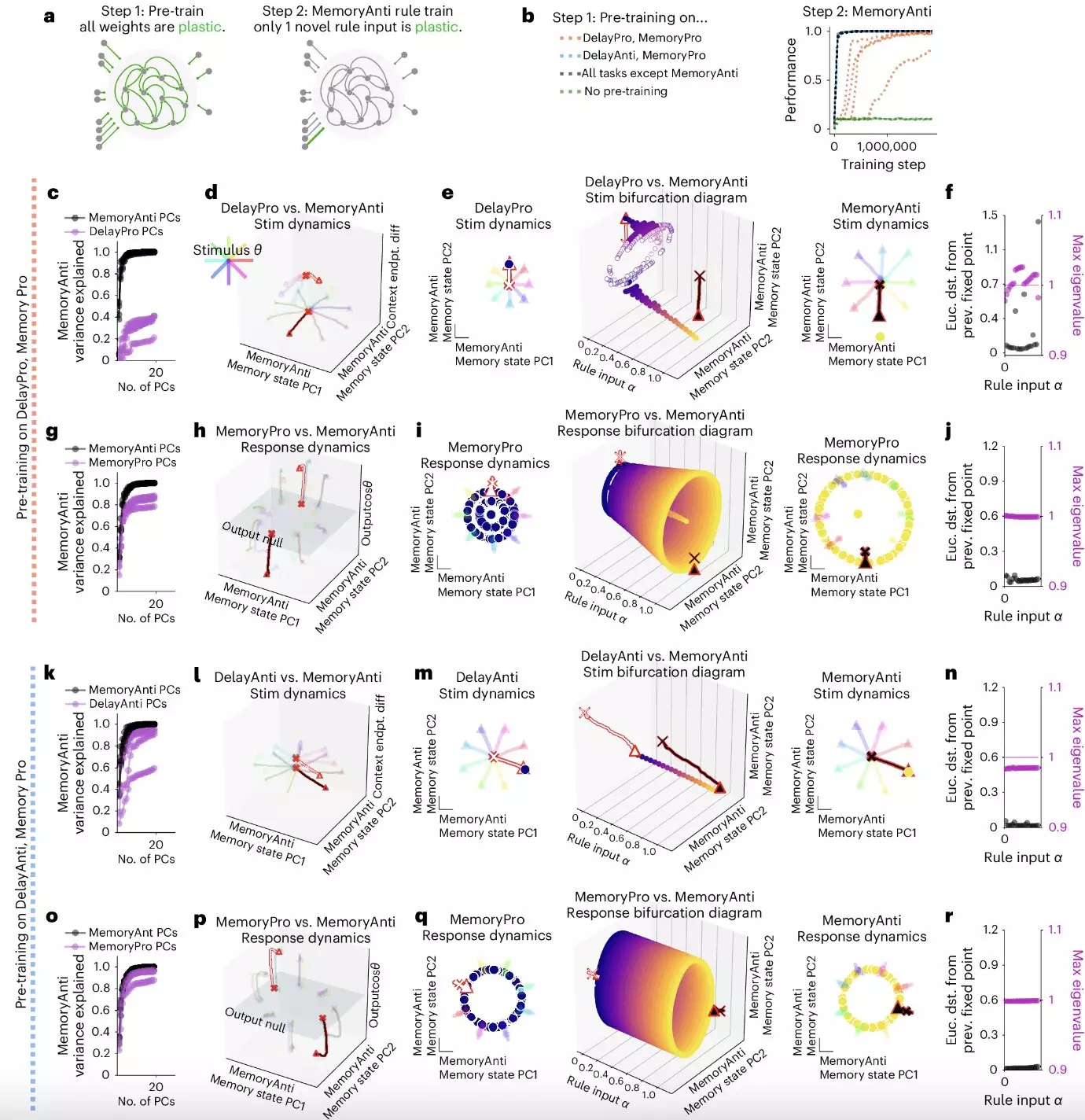Cognitive flexibility is a crucial human ability that allows individuals to switch effortlessly between different thoughts and mental concepts. This capability enables multitasking, rapid skill acquisition, and adaptation to new situations. Although artificial intelligence systems have made significant advancements in recent years, they still lack the level of flexibility observed in human cognition.
A group of researchers from New York University, Columbia University, and Stanford University conducted a study in 2019 to train a neural network to perform 20 related tasks simultaneously. This novel approach aimed to investigate the mechanisms underlying modular computations within artificial neural networks. The researchers identified “dynamical motifs” as the computational substrate that enables these networks to tackle multiple tasks efficiently.
Through dynamical systems analyses, the researchers found that neural networks implement specific computations through recurring patterns of neural activity known as dynamical motifs. These motifs, such as attractors, decision boundaries, and rotations, were observed to be reused across different tasks. The study also revealed that lesions to these motifs impaired the network’s ability to perform modular computations effectively.
The findings of this study have significant implications for both neuroscience and computer science research. Understanding the role of dynamical motifs in neural computation could lead to a better grasp of the processes underlying cognitive flexibility. This knowledge may pave the way for the development of new strategies to replicate these processes in artificial neural networks, enhancing their ability to tackle multiple tasks.
The investigation into dynamical motifs sheds light on the fundamental units of compositional computation within neural networks. By identifying these motifs as a critical component of cognitive flexibility, researchers are better equipped to explore questions of specialization and generalization in neural systems. This groundbreaking research opens new avenues for studying the intersection between biological neural circuits and artificial intelligence, ultimately leading to more flexible and adaptable AI systems.


Leave a Reply